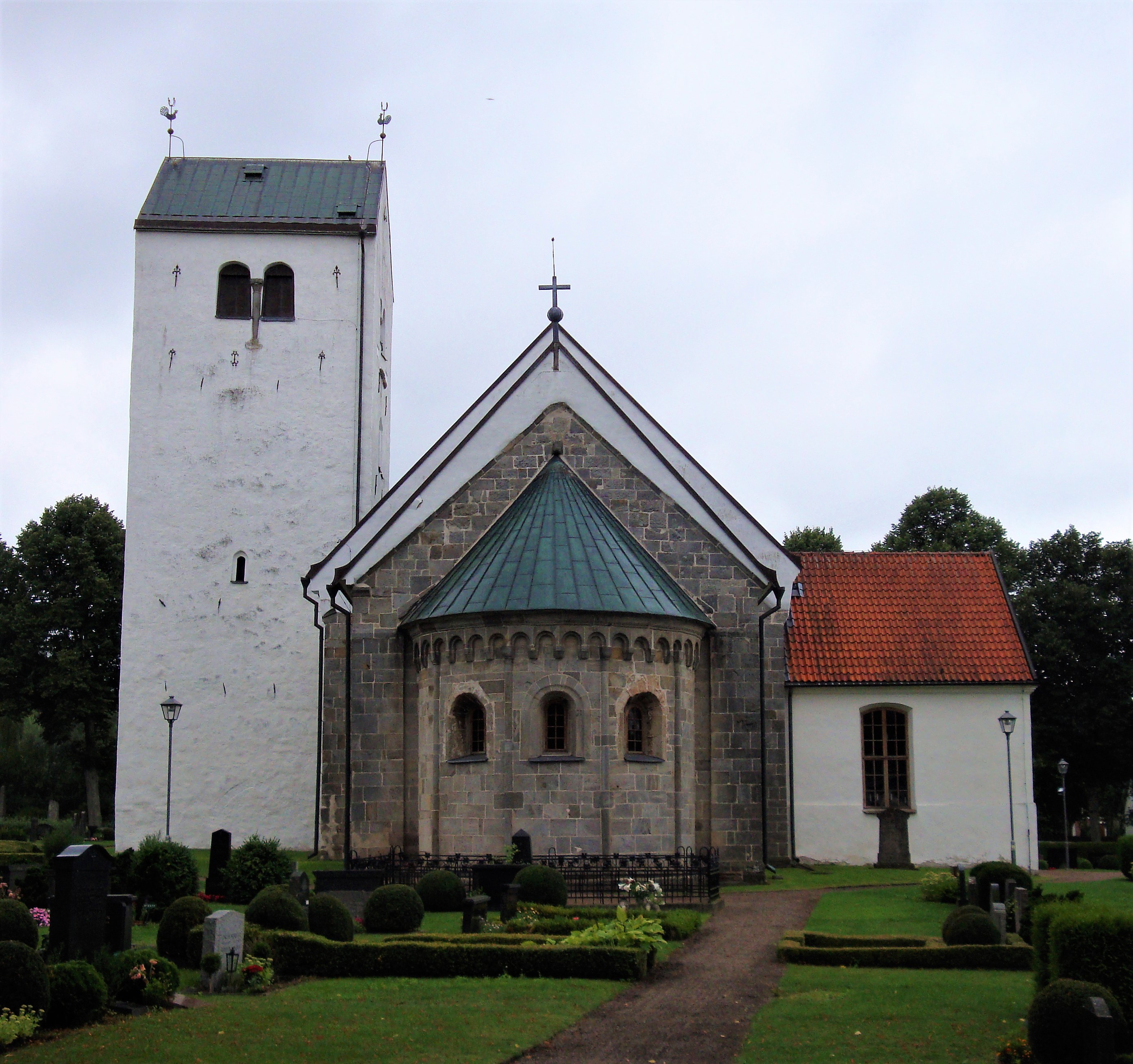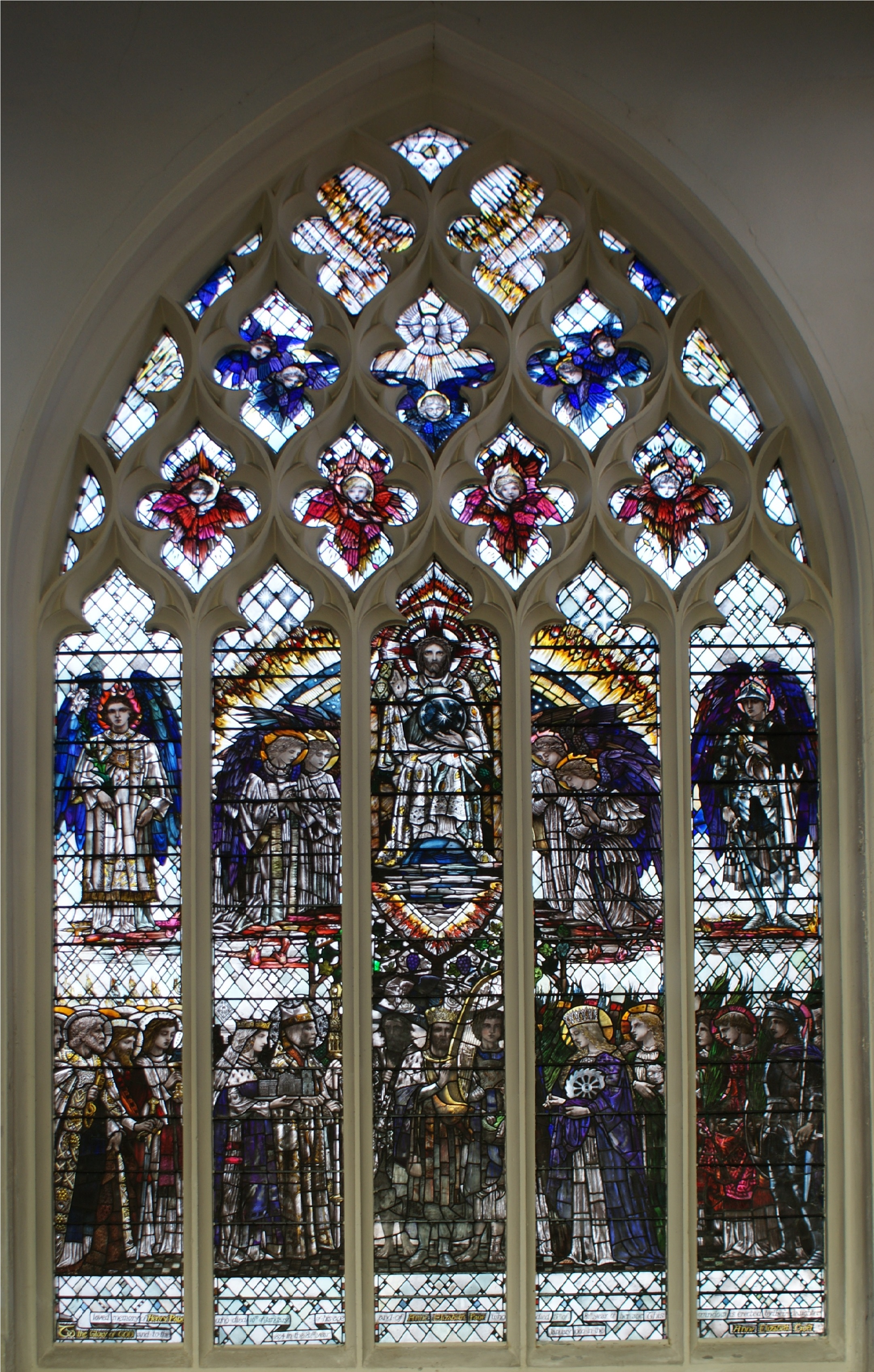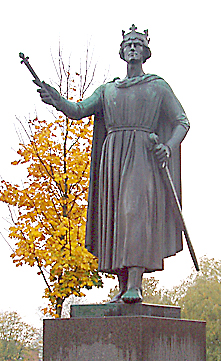|
Vä Church
Vä Church ( sv, Vä kyrka), sometimes also called Saint Mary's Church in Vä (''Mariakyrkan i Vä'') is a well-preserved Romanesque church in Vä, in the southern Swedish province of Scania. It belongs to the Church of Sweden and is a listed building. It was built in the early 12th century, at a time when Scania was part of Denmark. The building was commissioned by a member of the Danish royal family, probably Queen Margaret Fredkulla. The church originally consisted of a nave, a chancel with an apse and two western towers. Quite soon after being finished, it was donated to Premonstratensian monks who used it as the church of their monastery until 1213. It simultaneously functioned as the parish church of Vä. At the end of the Middle Ages, a third tower was built, and in 1593 the building was enlarged. At the beginning of the 19th century, the western towers were demolished. A major restoration was carried out in the 1960s. The church is one of the oldest stone churches i ... [...More Info...] [...Related Items...] OR: [Wikipedia] [Google] [Baidu] |
Swedish Language
Swedish ( ) is a North Germanic language spoken predominantly in Sweden and in parts of Finland. It has at least 10 million native speakers, the fourth most spoken Germanic language and the first among any other of its type in the Nordic countries overall. Swedish, like the other Nordic languages, is a descendant of Old Norse, the common language of the Germanic peoples living in Scandinavia during the Viking Era. It is largely mutually intelligible with Norwegian and Danish, although the degree of mutual intelligibility is largely dependent on the dialect and accent of the speaker. Written Norwegian and Danish are usually more easily understood by Swedish speakers than the spoken languages, due to the differences in tone, accent, and intonation. Standard Swedish, spoken by most Swedes, is the national language that evolved from the Central Swedish dialects in the 19th century and was well established by the beginning of the 20th century. While distinct regional v ... [...More Info...] [...Related Items...] OR: [Wikipedia] [Google] [Baidu] |
Te Deum
The "Te Deum" (, ; from its incipit, , ) is a Latin Christian hymn traditionally ascribed to AD 387 authorship, but with antecedents that place it much earlier. It is central to the Ambrosian hymnal, which spread throughout the Latin Church with other parts of the Milanese Rite in the 6th to 8th centuries. It is sometimes known as the Ambrosian Hymn, although authorship by Saint Ambrose is unlikely. The term Te Deum can also refer to a short religious service (of blessing or thanks) based upon the hymn. History Authorship of the hymn is traditionally ascribed to Saint Ambrose (died 397) or Saint Augustine (died 430). In 19th-century scholarship, Saint Hilary of Poitiers (died 367) and Saint Nicetas of Remesiana (died 414) were proposed as possible authors. In the 20th century, the association with Nicetas has been deprecated, so that the hymn, while almost certainly dating to the 4th century, is considered as being of uncertain authorship. Authorship of Nicetas of ... [...More Info...] [...Related Items...] OR: [Wikipedia] [Google] [Baidu] |
Byzantine Empire
The Byzantine Empire, also referred to as the Eastern Roman Empire or Byzantium, was the continuation of the Roman Empire primarily in its eastern provinces during Late Antiquity and the Middle Ages, when its capital city was Constantinople. It survived the fragmentation and fall of the Western Roman Empire in the 5th century AD and continued to exist for an additional thousand years until the fall of Constantinople to the Ottoman Empire in 1453. During most of its existence, the empire remained the most powerful economic, cultural, and military force in Europe. The terms "Byzantine Empire" and "Eastern Roman Empire" were coined after the end of the realm; its citizens continued to refer to their empire as the Roman Empire, and to themselves as Romans—a term which Greeks continued to use for themselves into Ottoman times. Although the Roman state continued and its traditions were maintained, modern historians prefer to differentiate the Byzantine Empire from Ancient ... [...More Info...] [...Related Items...] OR: [Wikipedia] [Google] [Baidu] |
Kievan Rus'
Kievan Rusʹ, also known as Kyivan Rusʹ ( orv, , Rusĭ, or , , ; Old Norse: ''Garðaríki''), was a state in Eastern and Northern Europe from the late 9th to the mid-13th century.John Channon & Robert Hudson, ''Penguin Historical Atlas of Russia'' (Penguin, 1995), p.14–16.Kievan Rus Encyclopædia Britannica Online. Encompassing a variety of polities and peoples, including East Slavic, , and Finnic, it was ruled by the Rurik dynasty< ... [...More Info...] [...Related Items...] OR: [Wikipedia] [Google] [Baidu] |
Donor Portrait
A donor portrait or votive portrait is a portrait in a larger painting or other work showing the person who commissioned and paid for the image, or a member of his, or (much more rarely) her, family. ''Donor portrait'' usually refers to the portrait or portraits of donors alone, as a section of a larger work, whereas ''votive portrait'' may often refer to a whole work of art intended as an ex-voto, including for example a Madonna, especially if the donor is very prominent. The terms are not used very consistently by art historians, as Angela Marisol Roberts points out, and may also be used for smaller religious subjects that were probably made to be retained by the commissioner rather than donated to a church. Donor portraits are very common in religious works of art, especially paintings, of the Middle Ages and Renaissance, the donor usually shown kneeling to one side, in the foreground of the image. Often, even late into the Renaissance, the donor portraits, especially when of ... [...More Info...] [...Related Items...] OR: [Wikipedia] [Google] [Baidu] |
Parchment
Parchment is a writing material made from specially prepared untanned skins of animals—primarily sheep, calves, and goats. It has been used as a writing medium for over two millennia. Vellum is a finer quality parchment made from the skins of young animals such as lambs and young calves. It may be called animal membrane by libraries and museums that wish to avoid distinguishing between ''parchment'' and the more-restricted term ''vellum'' (see below). Parchment and vellum Today the term ''parchment'' is often used in non-technical contexts to refer to any animal skin, particularly goat, sheep or cow, that has been scraped or dried under tension. The term originally referred only to the skin of sheep and, occasionally, goats. The equivalent material made from calfskin, which was of finer quality, was known as ''vellum'' (from the Old French or , and ultimately from the Latin , meaning a calf); while the finest of all was ''uterine vellum'', taken from a calf foetus or s ... [...More Info...] [...Related Items...] OR: [Wikipedia] [Google] [Baidu] |
Valdemar I Of Denmark
Valdemar I (14 January 1131 – 12 May 1182), also known as Valdemar the Great ( da, Valdemar den Store), was King of Denmark from 1154 until his death in 1182. The reign of King Valdemar I saw the rise of Denmark, which reached its medieval zenith under his son King Valdemar II. Childhood Valdemar was the son of Canute Lavard, Duke of Schleswig, the chivalrous and popular eldest son of King Eric I of Denmark. Valdemar's father was murdered by King Magnus I of Sweden days before the birth of Valdemar; his mother, Ingeborg of Kiev, daughter of Grand Prince Mstislav I of Kiev and Christina Ingesdotter of Sweden, named him after her grandfather, Grand Prince Vladimir Monomakh of Kiev. Valdemar was raised at Ringsted in the court of Danish nobleman Asser Rig of Fjenneslev (c. 1080–1151). Asser was a member of the Hvide noble family and had been raised together with Valdemar's father Canute Lavard. Valdemar was raised together with Asser's sons, including Absalon (c.� ... [...More Info...] [...Related Items...] OR: [Wikipedia] [Google] [Baidu] |
Sophia Of Minsk
Sophia of Minsk or Sophia of Polotsk (died 5 May 1198) was a Danish queen consort by marriage to King Valdemar I of Denmark, and a landgravine of Thuringia by marriage to Louis III, Landgrave of Thuringia. Life Origin Sophia was the daughter of Richeza of Poland, Dowager Queen of Sweden, from her second marriage to a man called "Valador" King in Poloni Land. The identity of her father is uncertain, it was either Volodar of Minsk or , Prince of Novgorod and son of Vsevolod of Pskov. Both of them are the Rurikids. The latter version would mean Valdemar was married to his first cousin once removed, as Sophia's possible father Volodar was nephew of Valdemar's mother Ingeborg of Kiev. Childhood Sophia spent a part of her childhood in Denmark, where her mother had been married to a Danish prince in her first marriage, and returned with her daughter when her second marriage was terminated. Sophia was the half sister of Canute V of Denmark, the son of her mother by her first marri ... [...More Info...] [...Related Items...] OR: [Wikipedia] [Google] [Baidu] |
Vä Kyrka 06
Vä is a former town in Scania, now a village in the municipality of Kristianstad in Sweden, ca 5 km south west of the town of Kristianstad. History The name stems from the old Danish word ''væ'', meaning "cult place or holy ground". Vä Church is one of the oldest stone churches in Sweden, and contains some of the oldest and most monumental church murals in Sweden. The first written mentioning of Vä as a town is from the 1250s, but already in the early 13th century, the place is mentioned in the Danish Census Book, by King Valdemar. The town was burnt many times. Most notable are the burnings by Karl Knutsson in 1452, Svante Sture in 1509, in 1569 by the Swedish duke Charles (later king Charles IX. The most infamous burning of Væ, as well as the last, was done by the Swedish King Gustaf II Adolf in 1612. Væ (as of then) was the largest settlement within 24 Danish parishes which the young Swedish king burned down more or less for his own pleasure and without meeting ... [...More Info...] [...Related Items...] OR: [Wikipedia] [Google] [Baidu] |
Kristianstad
Kristianstad (, ; older spelling from Danish ''Christianstad'') is a city and the seat of Kristianstad Municipality, Scania County, Sweden with 40,145 inhabitants in 2016. During the last 15 years, it has gone from a garrison town to a developed commercial city, today attracting visitors in the summertime mainly from Germany, Denmark and The Netherlands. History The city was founded in 1614 by King Christian IV of Denmark (the city's name literally means 'Town of Christian') as a planned city after the burning of the nearby town of Vä and moving the city rights of the neighbouring town of Sölvesborg and Åhus to the new town. The purpose of the town was to safeguard the eastern half of the Danish province of Scania against any future raids from Sweden in the north, but also as a symbol of the power of Christian himself. One of these raids had sacked the nearby town of Vä in 1612. Vä then lost its charter and the people were moved to the new, better fortified city. The king ... [...More Info...] [...Related Items...] OR: [Wikipedia] [Google] [Baidu] |
Christian IV
Christian IV (12 April 1577 – 28 February 1648) was King of Denmark and Norway and Duke of Holstein and Schleswig from 1588 until his death in 1648. His reign of 59 years, 330 days is the longest of Danish monarchs and Scandinavian monarchies. A member of the House of Oldenburg, Christian began his personal rule of Denmark in 1596 at the age of 19. He is remembered as one of the most popular, ambitious, and proactive Danish kings, having initiated many reforms and projects. Christian IV obtained for his kingdom a level of stability and wealth that was virtually unmatched elsewhere in Europe. He engaged Denmark in numerous wars, most notably the Thirty Years' War (1618–1648), which devastated much of Germany, undermined the Danish economy, and cost Denmark some of its conquered territories. He rebuilt and renamed the Norwegian capital Oslo as ''Christiania'' after himself, a name used until 1925. Early years Birth and family Christian was born at Frederiksborg C ... [...More Info...] [...Related Items...] OR: [Wikipedia] [Google] [Baidu] |






.jpg)


